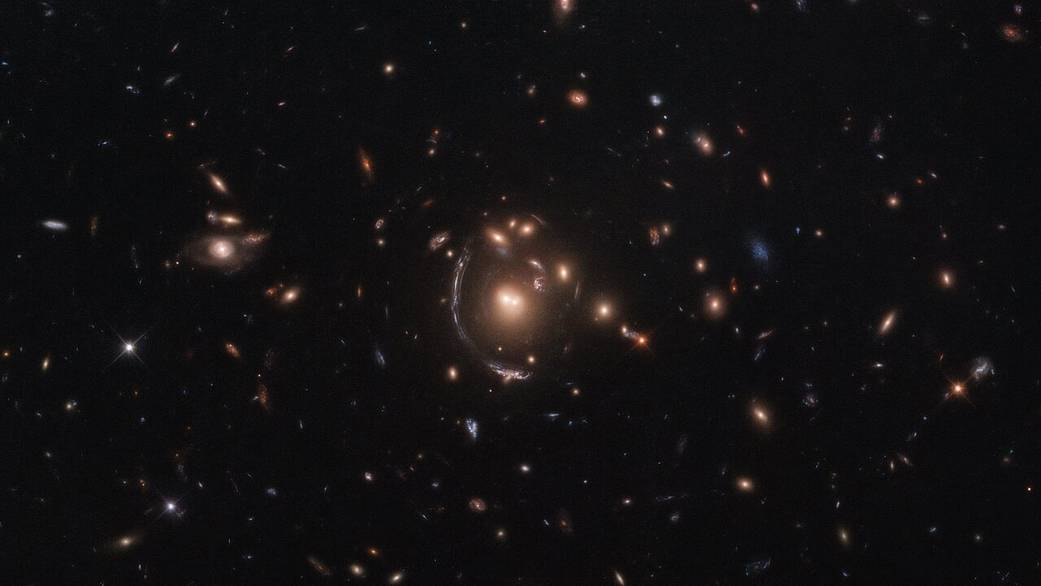This NASA/ESA Hubble Space Telescope image features the galaxy LRG-3-817, also known as SDSS J090122.37+181432.3. The galaxy, its image distorted by the effects of gravitational lensing, appears as a long arc to the left of the central galaxy cluster.
Gravitational lensing occurs when a large distribution of matter, such as a galaxy cluster, sits between Earth and a distant light source. As space is warped by massive objects, the light from the distant object bends as it travels to us and we see a distorted image of it. This effect was first predicted by Einstein’s general theory of relativity.
Strong gravitational lenses provide an opportunity for studying properties of distant galaxies, since Hubble can resolve details within the multiple arcs that are one of the main results of gravitational lensing. An important consequence of lensing distortion is magnification, allowing us to observe objects that would otherwise be too far away and too faint to be seen. Hubble makes use of this magnification effect to study objects beyond those normally detectable with the sensitivity of its 2.4-meter-diameter primary mirror, showing us the most distant galaxies humanity has ever encountered.
This lensed galaxy was found as part of the Sloan Bright Arcs Survey, which discovered some of the brightest gravitationally lensed high-redshift galaxies in the night sky.
Text credit: European Space Agency
Image credit: ESA/Hubble & NASA, S. Allam et al.
这张NASA/ESA哈勃太空望远镜拍摄的图片显示了LRG-3-817星系,也被称为SDSS J090122.37+181432.3星系。由于引力透镜效应,该星系的图像被扭曲,在中央星系团的左侧呈现出一条长长的弧线。
当大量物质分布在地球和遥远光源之间时,比如星系团,就会发生引力透镜效应。当空间被巨大的物体扭曲时,来自远处物体的光在向我们传播时就会弯曲,我们就会看到它扭曲的图像。爱因斯坦的广义相对论首次预言了这种效应。
强引力透镜为研究遥远星系的性质提供了一个机会,因为哈勃望远镜可以分辨出多弧线内的细节,而这是引力透镜化的主要结果之一。透镜失真的一个重要后果是放大,使我们能够观察到那些本来太远、太微弱而看不见的物体。哈勃望远镜利用这种放大作用研究了物体,而其物体通常无法通过其直径为2.4米的主镜进行检测,从而向我们展示了人类有史以来最遥远的星系。
这个透镜星系是斯隆明亮弧线调查(Sloan Bright Arcs Survey)的一部分,该调查发现了夜空中一些引力透镜高度红移的最亮星系。
文字来源: 欧洲航天局(ESA)
图片来源: ESA/Hubble & NASA, S. Allam et al.



